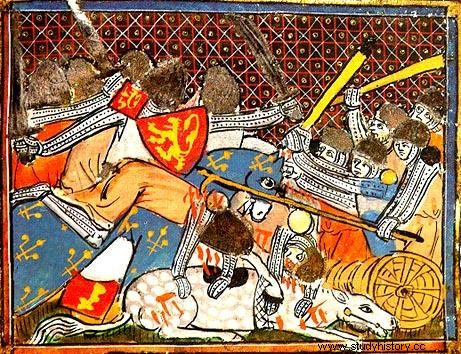The term «butterfly effect » was coined by the meteorologist and mathematician Edward Lorenz (1917-2008) when trying to make a prediction of the atmospheric climate. Its meaning could be summarized in that a small initial disturbance, through an amplification process, can generate a considerably large effect ("the flapping of a butterfly's wings can be felt on the other side of the world «). Although it is a recent concept, it could be applied to a case that occurred in the fourteenth century, in which a simple nail caused the defeat of King Philip IV of France the Beautiful , and the loss of the County of Flanders.
In 1300, the county of Flanders lost its independence and became part of the crown of France. Flemish discontent was widespread and growing with decisions made by French-imposed governors. Faced with the possibility of a rebellion, the governors of Flanders prepared a plan to eliminate the Flemish militias. The horse of one of the riders who served as a courier, and who carried the message detailing the details of the plan, lost a horseshoe when a nail came out . He ended up stamped on the ground… and the message flew out. Several flamingos came to his aid, but one of them, recognizing the courier, read the message...
Word spread and the militias took the lead. On the night of May 18, 1302, they slaughtered the French installed in Bruges in what was called the Bruges Matins .
On July 11, 1302, the French and the Flemish clashed in the battle of Courtrai . The French army was resoundingly defeated.

Battle of Courtrai
Source:History of the world without the boring bits – Fernando Garcés Blázquez
Image:Wikipedia
